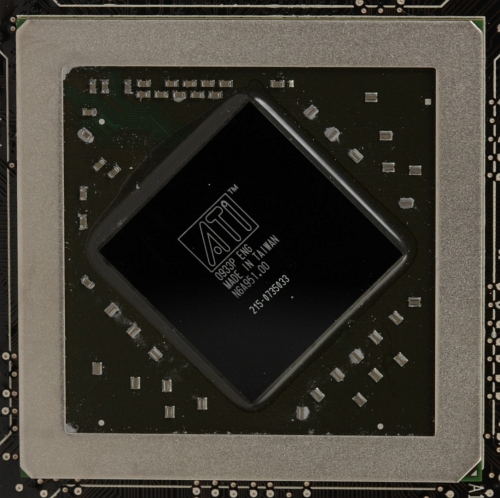Index
Page 2 of 7
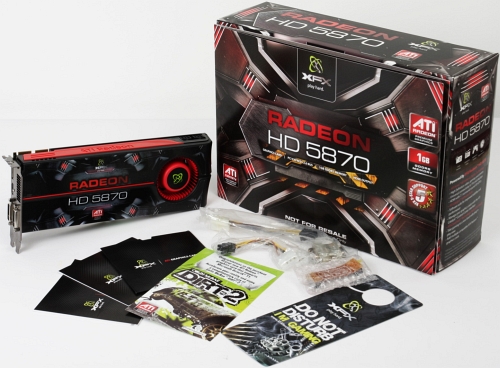
XFX Radeon HD 5870 comes in a large but nicely designed box, with a velcro-attached poster which acts as a lid at the same time. When you remove and unfold the poster, it looks as though you're looking at three monitors connected to the XFX HD 5870. This is a way to promote Eyefinity technology, i.e. support for more than two monitors on your graphics card. This technology allow for scenarios like using three 30'' monitors, where the graphics card can combine their resolutions and distribute the 7680x3200 picture across three monitors.
The box contains two 6-pin cables, DVI-to-VGA adapter, Crossfire connector, driver CD, the Dirt 2 coupon and XFX's neat "Don't Disturb I'm Gaming" doorsign.
If you happen to buy a 5870 Eyefinity card with 6 video outs, you can expect 1920x1080 resolution per monitor. It would’ve really been great if we had three monitors at our disposal, as we could’ve put the XFX-provided Colin McRae Dirt 2 coupon to some good multi-display use.
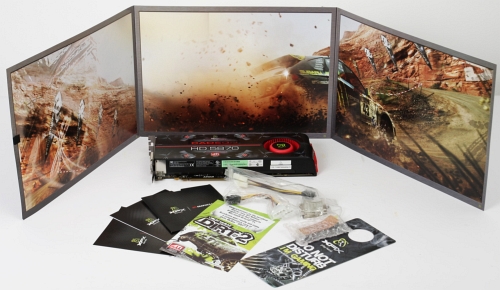
As you can see from the picture, the cooler stretches the entire length of the HD 5870 graphics card. The card looks big and powerful, just like it’s supposed to be, and it’s 1cm longer than the 27cm long dual-GPU HD 4870 X2 card.
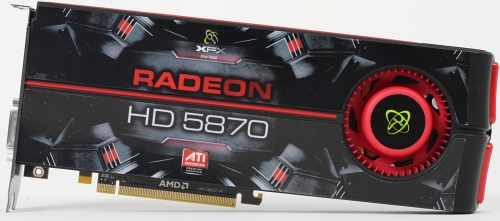
The reference ATI HD 5870 card comes with a black matter cooler with a red line in the middle, and XFX put their sticker which fit nicely with the rest of the card.
We must admit we were pretty concerned about the XFX HD 5870 cooler’s “noise potential”, as this large cooler features pretty small air outlets. The I/O panel features so many outs that only a fraction of space was left for ventilation. This is why a significant amount of hot air is left inside the case. The following picture shows a nicely engraved ATI Radeon logo on the upper side of the card.

On the rear of the card you’ll find a metal plate for which we can’t say with certainty whether it helps in cooling the card, but it shields the PCB from potential damage and sure looks good. The following picture shows the graphics core. The Crossfire connectors kept their standard position and we already mentioned that 4 Cypress Eyefinity cards will allow for an impressive number of 24 monitors.
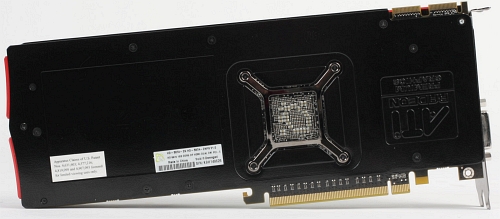
You won’t find memory modules underneath the plate as all 8 modules are placed on the GPU side of the PCB. The cooling is firmly fixed in its place with screws going through the PCB and into the metal plate.

The cooler stretches the entire length of the PCB and it's mostly made of copper. As you can see from the thermal paste prints, it leans on the memory and many other power components.

The combination of the heavy copper base, heatpipe technology and a large dissipation surface area on the aluminum fins helps the cooler to keep the card at about 80°C during operations. In extreme FurMark scenarios the card can hit up to 86°C, but while gaming it never exceeds 80°C.
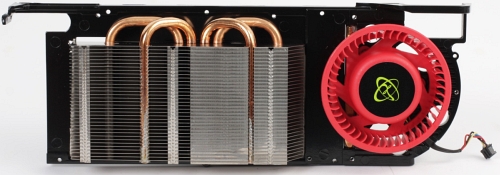
Note however that we used the large CoolerMaster ATCS 840 case with a great airflow, but smaller and more cramped cases might result in higher temperatures. Idle temperatures were around 39°C. The fan does a good job and while it's not too loud, we'd still have liked if it could be quieter. Note that idle operation results in pretty low noise levels.
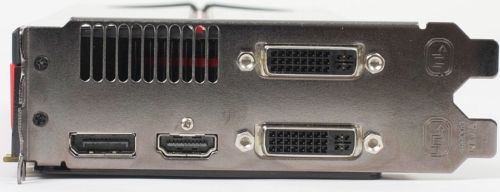
The I/O panel features two dual-link DVI outs, one HDMI and one DisplayPort out. The card allows for three monitors at the same time.
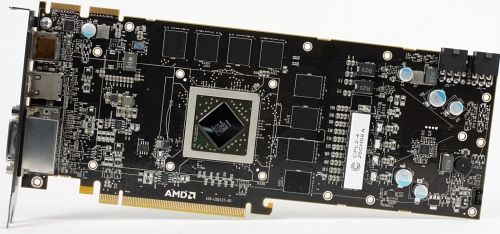
AMD did a good job on the power management circuitry and used two Voltera VT1165 MF Voltage controllers which can be controlled from software. The card draws power from two 6-pin power connectors.
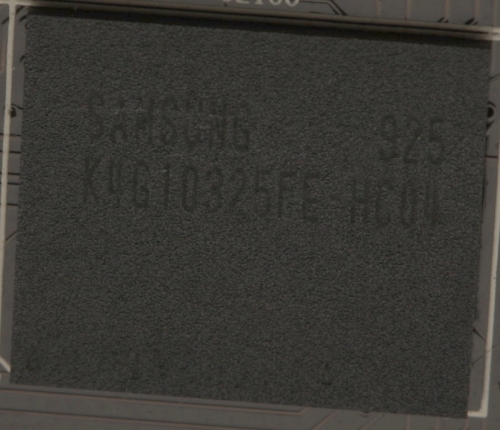
The card uses new Samsung’s K4G10325FE-HC04 rated at 1250MHz (5000MHz GDDR5 effectively).
AMD's new Cypress GPU has 2154 millin transistors and is produced on a 40nm prorcess,
